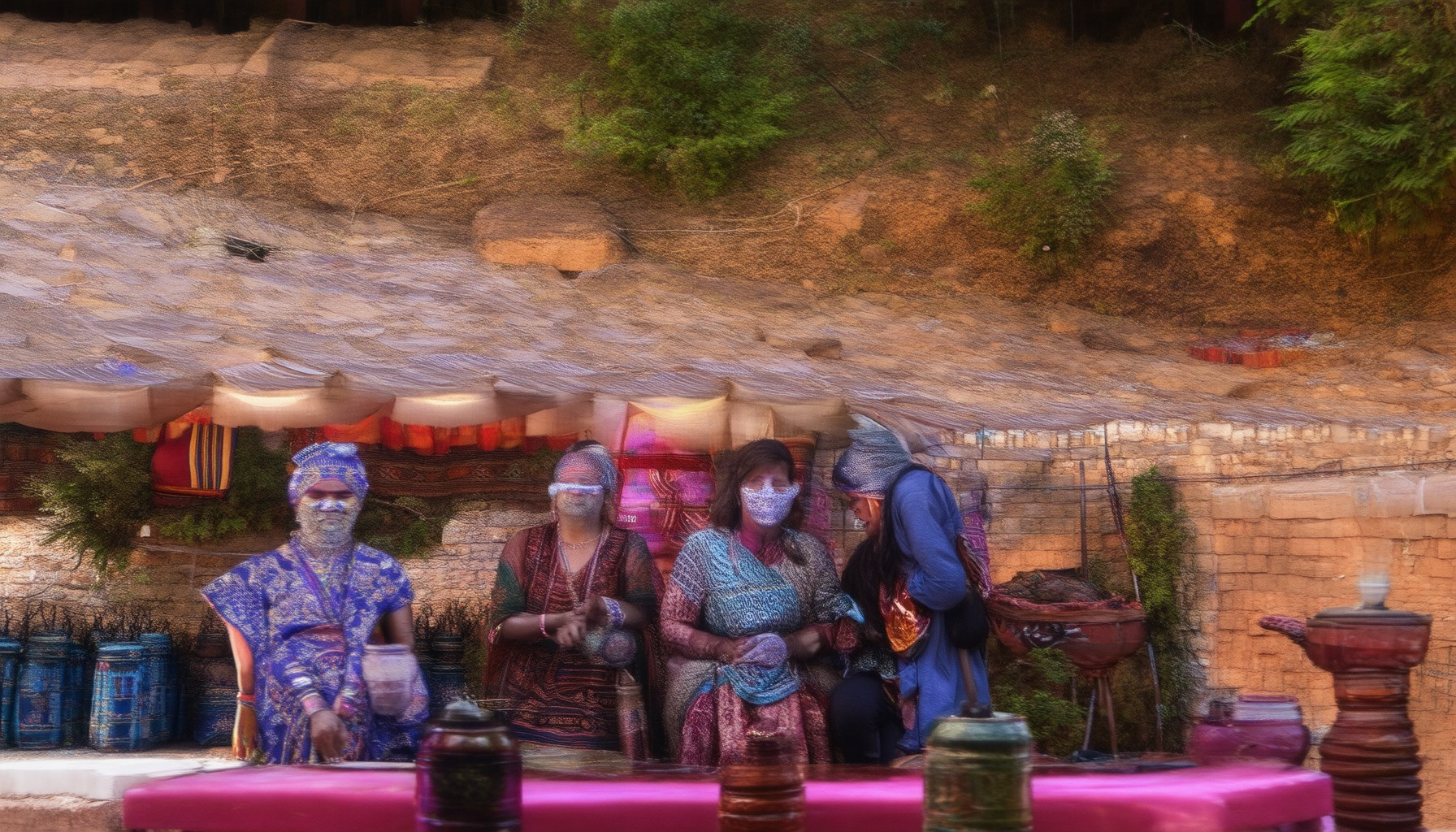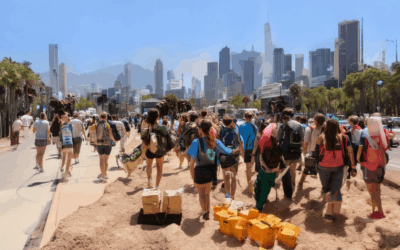Travel has always been more than just exploration; it’s a gateway to understanding diverse cultures, histories, and ways of life. For those who seek deeper connections, cultural engagement travel offers a transformative experience, allowing travelers to immerse themselves in the local fabric of a destination. By engaging with cultural practices, traditions, and narratives, visitors gain insight into the soul of a place, fostering meaningful relationships and enriching their personal growth. Whether it’s participating in local festivals, exploring museums, or interacting with communities, cultural engagement travel redefines the essence of tourism, turning it into a journey of the mind, heart, and spirit.

Cultural Travel Explained
Cultural travel is a unique form of travel that focuses on immersing yourself in the local culture of a destination. Unlike typical tourism, which often involves seeing sights and moving on, cultural travel emphasizes deep engagement with the host culture. This includes understanding traditions, customs, languages, and daily life.
Key Aspects of Cultural Travel
- Immersion: Cultural travelers often seek to live like locals, participating in daily activities and routines. This could involve attending local events, joining community groups, or simply spending time in public spaces to observe and interact with residents.
- Respect and Sensitivity: Cultural travel requires an understanding and appreciation of the host culture’s values and practices. Being respectful of local customs, beliefs, and social norms is crucial to having a positive experience.
- Learning and Growth: Cultural travel often leads to personal growth and increased empathy. By experiencing life from a different perspective, travelers can gain new insights into diverse ways of living and thinking.
- Authentic Connections: The goal of cultural travel is to forge meaningful and authentic connections with the people and places visited. This often leads to richer, more memorable experiences compared to more superficial forms of travel.
Benefits of Cultural Travel
Cultural travel offers numerous benefits, including:
- Expanded Worldview: Exposure to different cultures fosters greater understanding and tolerance of diversity.
- Personal Development: Engaging with new cultures can lead to personal growth and the development of new skills.
- Educational Opportunities: Cultural travel provides a platform for learning about history, art, language, and customs in an interactive way.
- Fostering Global Awareness: By immersing in different cultures, travelers contribute to a broader sense of global interconnectedness and mutual respect.
How to Approach Cultural Travel
For those interested in cultural travel, here are some tips to make the most of the experience:
- Research Thoroughly: Before traveling, research the destination’s culture, including its history, traditions, and social norms.
- Learn Basic Language Skills: Knowing even a few words of the local language can significantly enhance your cultural immersion.
- Engage with Locals: Seek out opportunities to interact with locals, whether through volunteering, taking classes, or simply striking up conversations.
- Be Open-Minded: Approach the experience with an open mind and a willingness to adapt to new ways of living and thinking.
Cultural travel is more than just visiting a place; it’s about creating meaningful connections and gaining a deeper understanding of the world’s rich and varied cultures. By embracing the opportunity to immerse oneself in a new environment, travelers can enrich their lives and contribute to a more connected global community.
Cultural Engagement
Cultural engagement refers to the active participation and immersion in diverse cultural activities, traditions, and communities. It involves exploring and interacting with different cultures to foster mutual understanding, appreciation, and respect. Cultural engagement goes beyond passive observation; it requires curiosity, openness, and a willingness to engage deeply with various perspectives.
Components of Cultural Engagement
- Active Participation : Cultural engagement often involves hands-on experiences such as attending festivals, visiting museums, joining community groups, or volunteering in cultural organizations. These activities allow individuals to connect with local traditions and practices firsthand.
- Exploration of Traditions : Engaging with cultural traditions may involve learning about customs, beliefs, and practices unique to a particular group. This could include studying historical contexts, trying traditional foods, or experiencing art forms like music, dance, or theater.
- Building Relationships : Cultural engagement fosters connections with people from different backgrounds. Through shared experiences and conversations, individuals can develop a deeper understanding of others’ lives and viewpoints.
- Critical Reflection : Reflecting on cultural differences and similarities is a crucial part of engagement. This reflection helps individuals develop empathy and a broader worldview.
Reasons for Cultural Engagement
- Personal Growth : Engaging with diverse cultures broadens perspectives, enhances communication skills, and deepens self-awareness.
- Social Connections : It strengthens community bonds and promotes inclusivity by bridging cultural gaps.
- Global Awareness : Cultural engagement contributes to a more informed and compassionate global citizenry, essential for addressing contemporary challenges.
By embracing cultural engagement, individuals not only enrich their own lives but also play a vital role in creating a more harmonious and inclusive world. Explore Inxchan’s guide to transformative travel and cultural exploration to discover how you can participate in meaningful experiences that resonate globally. Explore Inxchan .
Related Concepts
- Cultural Exchange : The reciprocal sharing of cultural elements between different groups.
- Intercultural Communication : Effective ways to bridge cultural divides through respectful dialogue and understanding.
Engage with us on Inxchan Blog to continue your journey of cultural discovery and global awareness.

How to Plan a Culturally Immersive Travel Experience
To create a truly culturally immersive travel experience, follow these organized steps:
- Research and Preparation
- Begin by thoroughly researching your destination. Study its history, traditions, and local customs to gain a deeper understanding.
- Immerse yourself in the local cuisine by enrolling in a cooking class or sampling street food.
- Transportation and Accommodation
- Opt for public transport or rent a bike/scooter to navigate like locals.
- Stay in local accommodations such as guesthouses or homestays to connect with the community. Consider joining local events at your hostel for networking opportunities.
- Engage with Locals
- Volunteer or participate in community projects to meet locals and contribute positively.
- Learn basic phrases in the local language to enhance interactions. Attend local festivals or events to immerse yourself further.
- Explore Beyond Tourist Hotspots
- Discover hidden gems and lesser-known spots for authentic experiences.
- Capture memories through photography, but always respect privacy and cultural norms.
- Reflect and Share
- Keep a journal to document your reflections and experiences.
- Share your journey through storytelling online or with friends to spread cultural awareness.
- Sustainable Tourism
- Plan your trip to minimize environmental impact and support local economies through ethical spending and eco-tourism practices.
By following these steps, you’ll create a meaningful and enriching travel experience that resonates deeply with both you and the local culture.

What Are Cultural Traveler Tourist Activities?
Cultural traveler tourist activities encompass a diverse range of experiences designed to immerse visitors in the traditions, history, and unique customs of different regions. These activities are tailored to provide deeper insights into a destination’s culture, often appealing to those seeking meaningful and educational travel experiences.
Here are some common types of cultural traveler tourist activities:
- Exploring Historical Sites : Visiting landmarks, ancient ruins, and significant historical buildings to understand the cultural heritage of a region.
- Attending Cultural Festivals : Participating in local celebrations, fairs, or festivals that showcase traditional music, dance, food, and customs.
- Joining Cultural Workshops : Engaging in hands-on activities such as cooking classes, traditional crafts, or music/dance workshops led by locals.
- Experiencing Traditional Cuisine : Tasting and learning about local dishes, ingredients, and culinary traditions through food tours or cooking sessions.
- Visiting Local Markets : Exploring vibrant markets to shop for unique souvenirs, observe local trades, and interact with artisans.
- Volunteer Travel Projects : Participating in community service projects, such as building schools, planting trees, or supporting local NGOs, to contribute to the destination’s development.
- Watching Cultural Performances : Enjoying live performances of traditional music, dance, theater, or circus arts to experience the artistic expressions of the culture.
- Exploring Architectural Landmarks : Discovering iconic structures that reflect the cultural and historical significance of a region.
- Engaging in Storytelling Events : Listening to local stories, legends, or historical narratives that bring the culture to life.
These activities allow travelers to connect with the local community, learn about the culture, and create lasting memories. Whether through immersive experiences or educational encounters, cultural traveler tourist activities aim to enrich the journey and foster a deeper appreciation for the host culture.
What Are the 5 Types of Cultural Tourists?
- Educational Tourists: These travelers are interested in learning about different cultures through museums, historical sites, and educational programs. They often seek guided tours and immersive experiences to gain knowledge and appreciation for diverse traditions.
- Adventure Seekers: Cultural tourists who combine their love for exploration with physical activities. They are drawn to regions with unique landscapes and cultural practices that offer opportunities for hiking, climbing, or extreme sports while soaking in local traditions.
- Voluntourists: Travelers who combine tourism with volunteer work. They participate in projects like building schools, conservation efforts, or community development, aiming to contribute positively to the destinations they visit.
- Luxury Cultural Enthusiasts: High-end travelers who prioritize comfort and exclusivity while exploring cultural attractions. They may opt for private guides, exclusive access to events, or luxurious accommodations that cater to their curiosity about different lifestyles.
- Digital Nomad Explorers: Remote workers and freelancers who use their travels as an opportunity to explore cultural hotspots while maintaining their professional lifestyle. They rely on technology to stay connected and document their journey through social media and blogs.

What Are Cultural Activities?
Cultural activities refer to the various practices, behaviors, and expressions that reflect the shared values, beliefs, traditions, and way of life of a particular group or society. These activities often include customs, languages, religions, arts, social institutions, and economic practices that define a culture.
Categories of Cultural Activities
- Festivals and Events
- Celebrations like holidays, weddings, birthdays, and religious ceremonies.
- Examples: Carnival, Mardi Gras, Diwali, Christmas, and Ramadan.
- Performing Arts
- Theater, music, dance, and storytelling performances.
- Examples: Ballet, opera, jazz, traditional folk dances, and stand-up comedy.
- Visual Arts
- Painting, sculpture, photography, and other visual forms of expression.
- Examples: Oil paintings, marble sculptures, street art, and digital art.
- Literary Arts
- Writing, poetry, and literature.
- Examples: Novels, short stories, plays, and epic poems.
- Social Customs and Traditions
- Rituals, greetings, and daily interactions.
- Examples: Handshakes, hugs, bowing, and exchanging gifts.
- Historical and Archaeological Sites
- Monuments, ruins, and places of historical significance.
- Examples: Pyramids, Stone Henge, Machu Picchu, and the Colosseum.
- Cuisine and Cooking
- Traditional recipes and food preparation methods.
- Examples: Sushi, curry, pasta, and barbecues.
- Traditional Crafts and Handicrafts
- Artistic skills passed down through generations.
- Examples: Pottery, weaving, carving, and candle-making.
- Religious and Spiritual Practices
- Rituals, prayers, and ceremonies.
- Examples: Hindu puja, Buddhist meditation, Christian masses, and Islamic prayers.
- Digital Media and Modern Culture
- Use of technology in cultural expression.
- Examples: Virtual reality experiences, augmented reality art exhibitions, and online festivals.
Conclusion
Cultural activities play a vital role in preserving history, fostering creativity, and promoting social cohesion. They provide insight into the soul of a community and help us appreciate the diversity of human experiences. Engaging in cultural activities enriches our lives and contributes to a deeper understanding of the world around us.





0 Comments